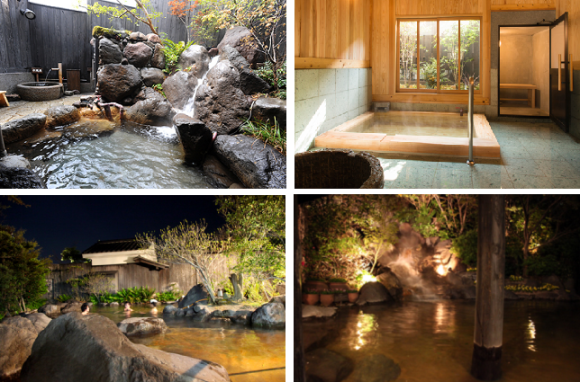
Even though the prefecture is home to barely a million residents, Oita has not one, but two famous hot spring resorts. Yufuin is generally held to be the more refined and tastefully restrained of the pair, while Beppu, despite having some of the most popular hot springs in Japan, gets saddled with the reputation as the more touristy town.
While there may be some truth to the labels, there’s one thing Beppu has that you won’t find in Yufuin, or anywhere else in the country for that matter: Japan’s only hot spring with three Michelin stars.
The high praise for Beppu’s Hyotan Onsen isn’t the result of a single evaluator getting swept up in the heat of the moment, either, as it’s been the recipient of Michelin stars for four consecutive years. Considering that Hyotan Onsen seems to be exactly what Michelin is looking for, we’re a little surprised it took them so long to notice the facility, since it’s been open since 1922.
Michelin hasn’t revealed the exact criteria by which it judges hot springs, but Hyotan Onsen’s lengthy list of attractions provide plenty of justification for its three stars. Admission is a reasonable 750 yen (US$7.35), or just 560 yen if you arrive after 6 p.m., and the expansive facility has eight male and eight female baths.
The baths have been kept in the same traditional style as they were 90 years ago, with tubs made of natural materials such as rock and Japanese cypress. The most dynamic is the Taki no Yu, or Waterfall Bath, with a series of 19 spouts of water cascading down from three meters (9’10”) above to warm and massage your shoulders, neck, and back.
It’s not just the number and variety of baths that draw visitors to Hyotan Onsen but the quality of the water itself. Taken directly from the spring, the water contains an extremely high content of metasilicic acid, which despite its somewhat frightening name is an excellent natural skin moisturizer.
There is one problem, though, which is that at the source the water is 100 degrees Celsius, which means it’s quite literally boiling. While you could cut it with cool water to bring the temperature down, doing so would also dilute its therapeutic mineral content. In order to keep its bathwater all-natural, Hyotan Onsen devised what it’s dubbed the Yumetake, coming from the kanji characters for “bath water,” “rain,” and “bamboo.”
The scalding water is poured over the bamboo framework, and as it flows down it cools in a matter of seconds to 47 degrees. This leaves it more than warm enough for a relaxing soak, but not so hot that it’ll start cooking anyone who sets foot in the tub.
An additional 330 yen gives you a chance to lounge in the sand bath, which is warmed by the hot spring flowing beneath the ground.
Hot spring water isn’t just for soaking in and heating up sand baths, though. It can also be used to cook by steaming various ingredients. Hyotan Onsen’s restaurant serves a number of set meals, and there’s also a casual outdoor terrace where you can enjoy Japanese-style comfort food such as curry and chicken tempura while still dressed in your cotton yukata robe.
If you’re craving dessert, there’s also onsen-cooked pudding, and Hyotan Onsen’s unique soft-serve ice cream called Yuraku Yura Soft, which contains gelatin made with the hot spring water.
There’s even a fountain from which you can drink the hot spring water itself, which is said to somehow alleviate both constipation and diarrhea.
▼ We’re no doctors, but really, we tend to think of the solutions to those two problems involving slides in opposite directions on the scale.
Aside from all this, Hyotan Onsen also has private family baths, both indoor and outdoor, which can be rented out by the hour. There’s also a free foot bath for those who want to experience the soothing waters while still keeping their clothes on.
If all this has you ready to pack your bags, the next thing you’ll need to do is find your way down to Oita Prefecture and Beppu Station, from where it’s a 25-minute bus ride to Hyotan Onsen. The facility is open from 9 a.m. until 1 o’clock the next morning, and with so many spots to relax, we don’t think we’d have any trouble using up all that time.
Related: Hyotan Onsen English website
Sources: Tabinesu, Hyotan Onsen
Top image: Hyotan Onsen
Insert images: Hyotan Onsen


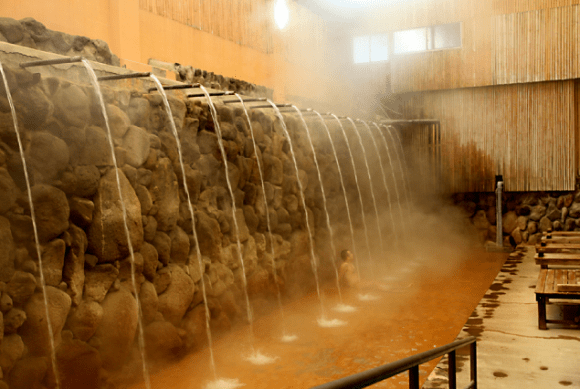
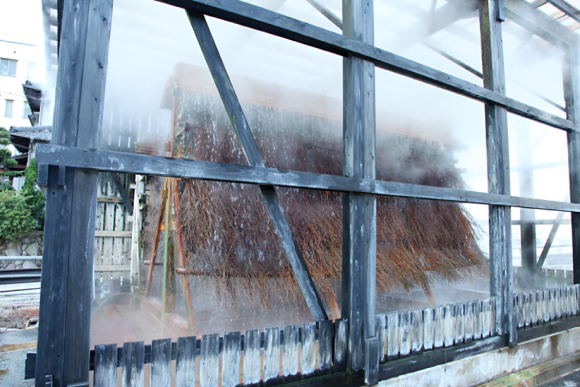

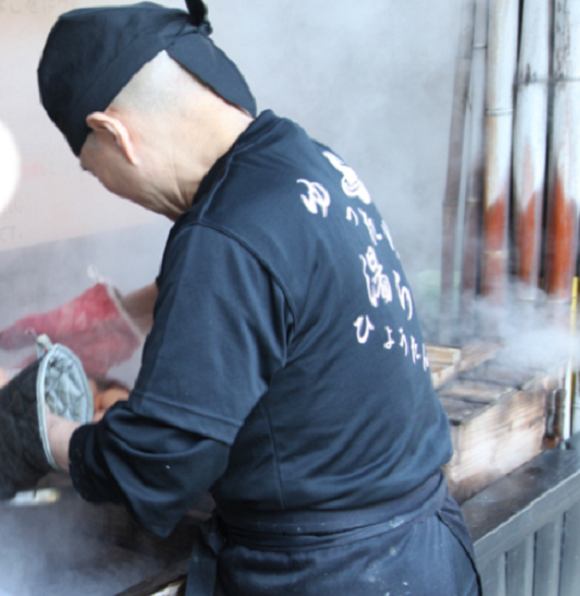
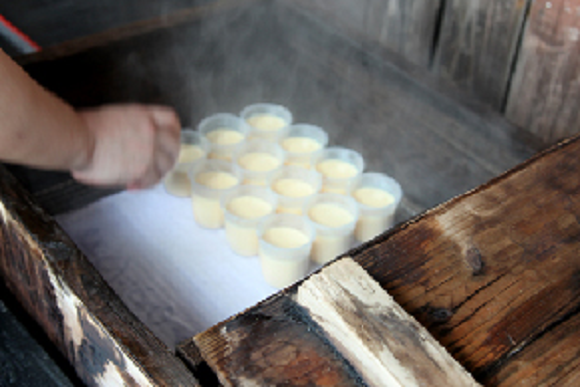
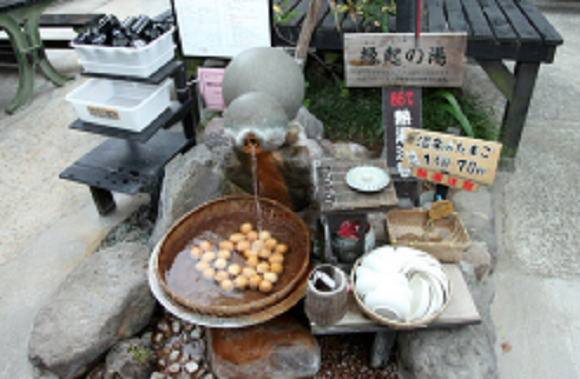
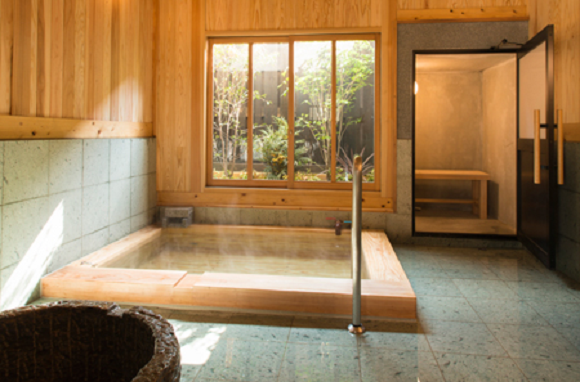

 Soak in a sand bath in Beppu, Japan’s famous onsen region
Soak in a sand bath in Beppu, Japan’s famous onsen region Free onsen! Kyushu resort shipping hot spring water to homes across Japan in thank-you program
Free onsen! Kyushu resort shipping hot spring water to homes across Japan in thank-you program New onsen facility in the heart of Tokyo’s business district to be ready for Olympics
New onsen facility in the heart of Tokyo’s business district to be ready for Olympics The 10 best hotel hot springs in Japan, as chosen by Japanese travelers
The 10 best hotel hot springs in Japan, as chosen by Japanese travelers You can make your own hot spring bath at this river in central Japan【Japan travel】
You can make your own hot spring bath at this river in central Japan【Japan travel】 How to order snacks on a Shinkansen bullet train in Japan
How to order snacks on a Shinkansen bullet train in Japan Hello, cosmetics! Clinique teams up with Hello Kitty this summer for first-time collaboration
Hello, cosmetics! Clinique teams up with Hello Kitty this summer for first-time collaboration Burger King Japan suddenly adds Dr. Pepper and Dr. Pepper floats to its menu nationwide
Burger King Japan suddenly adds Dr. Pepper and Dr. Pepper floats to its menu nationwide Demon Slayer: Kimetsu no Yaiba gets new roller coaster attractions and food at Universal Studios Japan
Demon Slayer: Kimetsu no Yaiba gets new roller coaster attractions and food at Universal Studios Japan New samurai glasses are Japan’s latest weird must-have souvenir
New samurai glasses are Japan’s latest weird must-have souvenir New Nintendo Lego kit is a beautiful piece of moving pixel art of Mario and Yoshi【Photos】
New Nintendo Lego kit is a beautiful piece of moving pixel art of Mario and Yoshi【Photos】 Nintendo history you can feel – Super NES, N64, and GameCube controllers become capsule toys
Nintendo history you can feel – Super NES, N64, and GameCube controllers become capsule toys Japan’s new difficult-to-drink-from beer glass protects your liver, but it’s a brutal experience
Japan’s new difficult-to-drink-from beer glass protects your liver, but it’s a brutal experience 10 things you should buy at 7-Eleven in Japan
10 things you should buy at 7-Eleven in Japan McDonald’s adds new watermelon frappe and fruity macaron to its menu in Japan
McDonald’s adds new watermelon frappe and fruity macaron to its menu in Japan “The most Delicious Cup Noodle in history” – Japan’s French Cup Noodle wins our heart【Taste test】
“The most Delicious Cup Noodle in history” – Japan’s French Cup Noodle wins our heart【Taste test】 Starbucks releases a cute Frappuccino and Unicorn Cake…but not in Japan
Starbucks releases a cute Frappuccino and Unicorn Cake…but not in Japan Kyoto Tower mascot termination reveals dark side behind cute Japanese characters
Kyoto Tower mascot termination reveals dark side behind cute Japanese characters McDonald’s Japan’s Soft Twist Tower: A phantom ice cream only sold at select branches
McDonald’s Japan’s Soft Twist Tower: A phantom ice cream only sold at select branches Yabai Ramen: What makes this Japanese ramen so dangerous?
Yabai Ramen: What makes this Japanese ramen so dangerous? Finally! Nintendo Japan expands Switch 8-bit controller sales to everybody, Online member or not
Finally! Nintendo Japan expands Switch 8-bit controller sales to everybody, Online member or not Japanese government wants to build luxury resorts in all national parks for foreign tourists
Japanese government wants to build luxury resorts in all national parks for foreign tourists To combat declining birth rate, Japan to begin offering “Breeding Visas” to foreigners
To combat declining birth rate, Japan to begin offering “Breeding Visas” to foreigners Studio Ghibli releases anime heroine cosplay dresses that are super comfy to wear
Studio Ghibli releases anime heroine cosplay dresses that are super comfy to wear Woman charged for driving suitcase without a license in Osaka
Woman charged for driving suitcase without a license in Osaka Studio Ghibli unveils My Neighbour Totoro miniature house model
Studio Ghibli unveils My Neighbour Totoro miniature house model Kyoto experiencing problems with foreign tourists not paying for bus fares, but not on purpose
Kyoto experiencing problems with foreign tourists not paying for bus fares, but not on purpose Fighting mild hunger with a Japanese soda that turns into jelly in the stomach【Taste test】
Fighting mild hunger with a Japanese soda that turns into jelly in the stomach【Taste test】 Studio Ghibli’s Howl’s Moving Castle tapestry unveiled in Japan for first time
Studio Ghibli’s Howl’s Moving Castle tapestry unveiled in Japan for first time McDonald’s new Happy Meals offer up cute and practical Sanrio lifestyle goods
McDonald’s new Happy Meals offer up cute and practical Sanrio lifestyle goods Sales of Japan’s most convenient train ticket/shopping payment cards suspended indefinitely
Sales of Japan’s most convenient train ticket/shopping payment cards suspended indefinitely Sold-out Studio Ghibli desktop humidifiers are back so Totoro can help you through the dry season
Sold-out Studio Ghibli desktop humidifiers are back so Totoro can help you through the dry season Japanese government to make first change to romanization spelling rules since the 1950s
Japanese government to make first change to romanization spelling rules since the 1950s Foreigner’s request for help in Tokyo makes us sad for the state of society
Foreigner’s request for help in Tokyo makes us sad for the state of society Ghibli founders Toshio Suzuki and Hayao Miyazaki contribute to Japanese whisky Totoro label design
Ghibli founders Toshio Suzuki and Hayao Miyazaki contribute to Japanese whisky Totoro label design Doraemon found buried at sea as scene from 1993 anime becomes real life【Photos】
Doraemon found buried at sea as scene from 1993 anime becomes real life【Photos】 Tokyo’s most famous Starbucks is closed
Tokyo’s most famous Starbucks is closed Princesses, fruits, and blacksmiths: Study reveals the 30 most unusual family names in Japan
Princesses, fruits, and blacksmiths: Study reveals the 30 most unusual family names in Japan Japanese hot spring adds roaring Godzilla Invasion Cave, other kaiju-related relaxation options
Japanese hot spring adds roaring Godzilla Invasion Cave, other kaiju-related relaxation options Hot springs website reveals the most popular user-picked onsen in all of northern Japan
Hot springs website reveals the most popular user-picked onsen in all of northern Japan Oita lures travelers with wonderful montage of synchronized hot spring bathing 【Video】
Oita lures travelers with wonderful montage of synchronized hot spring bathing 【Video】 We go looking for the free kaoyu hot spring facebath of onsen town Kusatsu【Photos】
We go looking for the free kaoyu hot spring facebath of onsen town Kusatsu【Photos】 The top 10 hot springs Japanese travelers want to visit this fall
The top 10 hot springs Japanese travelers want to visit this fall Famous hot springs of Beppu now offering portable inflatable onsen with authentic Beppu water
Famous hot springs of Beppu now offering portable inflatable onsen with authentic Beppu water 18 awesome overnight hot spring trips from Tokyo, and a quiz to help pick the best one for you
18 awesome overnight hot spring trips from Tokyo, and a quiz to help pick the best one for you This gorgeous hot spring is actually part of one of Japan’s most convenient airports【Photos】
This gorgeous hot spring is actually part of one of Japan’s most convenient airports【Photos】 One of Tokyo’s best hot spring complexes is closing for good
One of Tokyo’s best hot spring complexes is closing for good Beautiful onsen complex opens in downtown Osaka, lets you live onsen dream in heart of the city
Beautiful onsen complex opens in downtown Osaka, lets you live onsen dream in heart of the city Japan’s hot spring amusement park has opening date, wants 100 million yen in crowdfunding money
Japan’s hot spring amusement park has opening date, wants 100 million yen in crowdfunding money Ridiculously powerful hot spring bath in Japan earns both our respect and our fear【Videos】
Ridiculously powerful hot spring bath in Japan earns both our respect and our fear【Videos】 Beautiful new Tokyo hotel gives you the best of both worlds with hot spring bath in the big city
Beautiful new Tokyo hotel gives you the best of both worlds with hot spring bath in the big city Japan’s hot spring amusement park announces first rides, and onsen merry-go-round makes the cut!
Japan’s hot spring amusement park announces first rides, and onsen merry-go-round makes the cut! Japanese mayor responds to public after “spamusement park” onsen video reaches 1 million views
Japanese mayor responds to public after “spamusement park” onsen video reaches 1 million views
Leave a Reply